Study on Preparation of Waterproofing Agent for Mineral Wool Board from Modified C9Petroleum Resin
2013-07-31LiFengyanYangYajunDaiDanghuiYuanYadong
Li Fengyan; Yang Yajun; Dai Danghui; Yuan Yadong
(Department of Chemical Engineering, Beijing Institute of Petrochemical Technology, Beijing 102617)
Study on Preparation of Waterproofing Agent for Mineral Wool Board from Modified C9Petroleum Resin
Li Fengyan; Yang Yajun; Dai Danghui; Yuan Yadong
(Department of Chemical Engineering, Beijing Institute of Petrochemical Technology, Beijing 102617)
The modified petroleum resin emulsion prepared from the C9petroleum resin was modified with maleic anhydride. The effects of maleic rosin and maleic anhydride addition level, the modification time and the alkali liquor on the properties of the emulsion were discussed. The results showed that the optimum process conditions covered: a maleic anhydride mass fraction of 1.5%, a maleic rosin mass fraction of 10%, a KOH mass fraction of 1%, a petroleum resin modification temperature of 200 ℃, a petroleum resin modification duration of 3 h, and a modified petroleum resin emulsion/ wax emulsion mixing ratio of 1:1. The particle size of modified petroleum resin emulsion prepared under these conditions was equal to 104.166 μm.
C9petroleum resin, modifier, waterproofing agent, maleic rosin, maleic anhydride
1 Introduction
The mineral wool board is a building and ornament material used for sound absorption, fire prevention, decoration and heat insulation. But the mineral wool boards would easily be deformed if they are placed in damp surroundings. So the most critical task in expanding the application of mineral wool board is how to enhance its waterproof performance[1]. The most common waterproofing agent for the mineral wool board is wax. Wang Gaofeng[2]successfully prepared the waterproofing agent by using wax, monoglyceride, peregal and other surfactants as raw materials. Because wax cannot permeate through the mineral wool board easily owing to its non-polar property, so the waterproof performance of the mineral wool is not so good. Although the polar group in the modified petroleum resin can combine well with polar substances in the mineral wool board[3], its waterproof ability is really not so satisfactory. A distinct advantage can be obtained through cleverly combining the wax emulsion and the modified petroleum resin emulsion so that paraffin wax and the petroleum resin can be distributed homogeneously across the mineral wool to improve its waterproof ability. With the rapid development of China’s petrochemical industry, the capacity of ethylene production units is increasing every year coupled with a surging production of C9hydrocarbon fraction. It has been attracting so much attention on how to fully make use of C9petroleum resin[4-5].
Owing to the wide variety of C9petroleum resin sources and low production cost, in this article the waterproofing agent for the mineral wool board was prepared by means of the modified C9petroleum resin.
2 Experimental
Materials and instruments: Maleic rosin, C9petroleum resin were all technical-grade reagents. Maleic anhydride and KOH were all analytically pure reagents. The instruments used in experiments included a JJ-1 electric mixer (manufactured by the Jintan Medical Instrument Factory), a HH-S water bath (manufactured by the Yuhua Instrument Company), a TGL-16 high-speed centrifuge (manufactured by the Changzhou Guohua Electric Appliance Co., Ltd.), and a LS13320 type laser particle size analyzer (manufactured by the Beckman Coulter Co., Ltd.).
Preparation of the modified petroleum resin emulsion: (1) The C9petroleum resin and the modifying agent were put into the reactor when the reactor temperature was raised to 150 ℃. (2) The temperature in reactor was then increased to 200 ℃ to transform the mixture into a moltenstate. Then the modified petroleum resin could be obtained after stirring for 3 hours. (3) The maleic rosin was then introduced into the reactor, followed by stirring for 1 hour. (4) The temperature of reactor was reduced to 120 ℃prior to adding a hot alkali liquor containing 10 percent of KOH slowly into the mixture for carrying out the saponification reaction in half an hour. (5) The temperature in the reactor was then decreased to 95 ℃ prior to introducing hot water into the reactor for two times separately under stirring for 1 hour and 1.5 hours, respectively. (6) Eventually the C9modified petroleum resin emulsion can be obtained after filtration.
Determination of stability: The emulsion was put in the sample tubes and was then subjected to high-speed centrifugation for 30 minutes at a centrifugal speed of 3 000 r/min. The ratio of water to oil was recorded to measure the stability of the emulsion. The equation for calculating the ratio of water to oil is shown in Eq. 1:

Particle size measurements: The particle size was measured at room temperature by the LS13320 laser particle size analyzer. One or two drops of the modified petroleum resin emulsion were added into the instrument, with the particle size recorded.
3 Results and Discussion
3.1 Effect of the dosage of maleic anhydride
The carboxyl group can be introduced into C9petroleum resin by addition reaction because the C9petroleum resin contains double bonds. The dosage of the maleic anhydride ranged from 1.0% to 2.5% in these experiments. Table 1 shows the properties of product and the phenomena detected during saponification of the modified petroleum resin emulsion which was prepared with different dosage of maleic anhydride. Table 2 shows the result of centrifugation of the waterproofing agent, which was prepared by mixing the modified petroleum resin emulsion with the paraffin wax emulsion. The mixing mass ratio between petroleum resin and paraffin was 1:1 and the following experiments were conducted at the same mixing ratio.
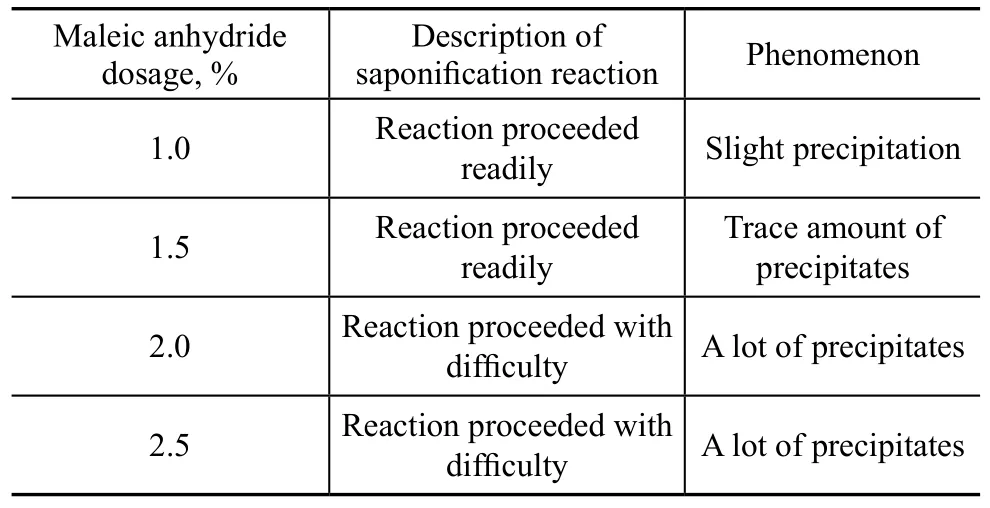
Table 1 Effect of the dosage of maleic anhydride on the modified petroleum resin emulsion

Table 2 Effect of the maleic anhydride dosage on the stability of waterproof agent
It can be seen from Table 1 that the emulsion was not satisfactorily homogeneous due to the existence of larger particles, and the saponification reaction could not proceed smoothly, when the dosage of maleic anhydride was equal to 2.0% or 2.5%. The saponification reaction could proceed readily when the dosage of maleic anhydride equated to 1.0% or 1.5%.
Table 2 shows that the waterproof agent demonstrated no obvious stratification phenomenon and just had a small amount of precipitates during centrifugation operation when the dosage of maleic anhydride was 1.0% or 1.5%. However, the stability of the waterproof agent was better when the dosage of maleic anhydride reached 1.5%. The waterproof agent showed no obvious stratification phenomenon when the dosage of maleic anhydride was 2.0% or 2.5%. The stability of the waterproof agent could not be maintained with the increase in the amount of maleic anhydride. The optimum dosage of maleic anhydride was specified at 1.5%.
3.2 Effect of the dispersant
The stickiness of the C9petroleum resin would be increased when it was heated, and the cohesion could be strengthened. So it was necessary to add some dispersants to make the petroleum resin emulsified easier. The dispersion effect was not so good when less dispersant wasintroduced. However, not only the resin quality could be affected, but also the thermal stability of the resin would decrease if surplus dispersant was added. The maleic rosin was chosen as the dispersant in this study, and the dosage of maleic rosin ranged from 7.0% to 11.0%. Tables 3 and 4 show the effect of the dosage of maleic rosin on the quality of modified petroleum resin emulsion and the stability of the waterproof agent.
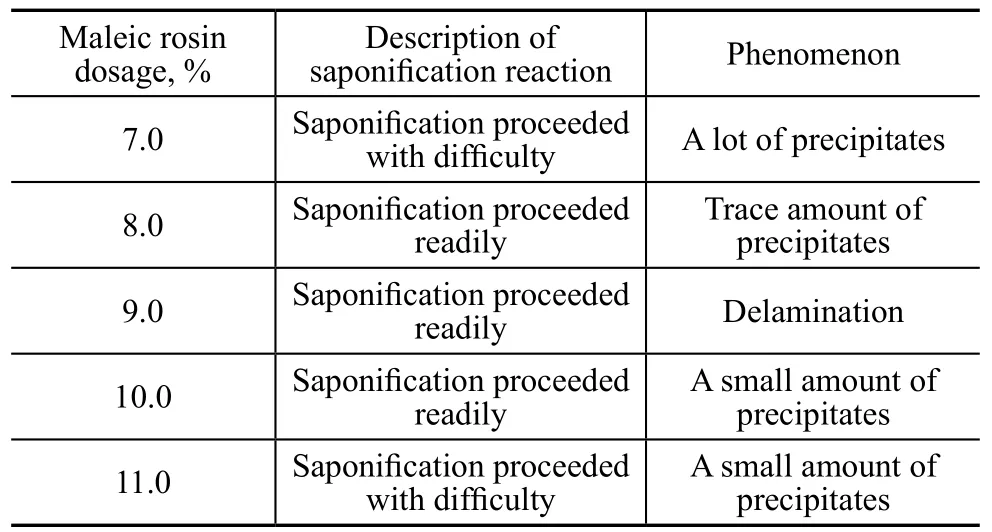
Table 3 Effect of the dosage of maleic rosin on the modified petroleum resin emulsion
As shown in Table 3, the saponification reaction proceeded with difficulty when the dosage of maleic rosin was less than 8.0%, and meanwhile the emulsion was not satisfactorily homogeneous because of the existence of lots of precipitates. The saponification reaction could proceed more easily with the increase in the dosage of maleic rosin. But the emulsion would not be satisfactorily homogeneous with the occurrence of lots of precipitates again, when the amount of maleic rosin was over 11%.

Table 4 Effect of the dosage of maleic rosin on the stability of the waterproof agent
As shown in Table 4, there would be delamination when the dosage of the maleic rosin was 7.0%. The delamination phenomenon would trend down with the increase in the dosage of maleic rosin except for the occurrence of a small amount of precipitates. The waterproof agent was free from delamination and precipitation phenomena when the dosage of maleic rosin was 10.0%. But the waterproof agent would experience the delamination phenomenon again when the amount of maleic rosin reached 11%.
Therefore it can be concluded that the optimum dosage of the maleic rosin should be 10%.
3.3 Effect of the dosage of the alkali liquor
The alkali liquor containing 10% of KOH was added to the modified petroleum resin emulsion at a ratio of 10 % of the mass of petroleum resin used in this study, and the dosage of KOH could be regulated from 0.5% to 2.0%. Tables 5 and 6 depict the effect of KOH dosage on the quality of modified petroleum resin emulsion and the waterproof agent.
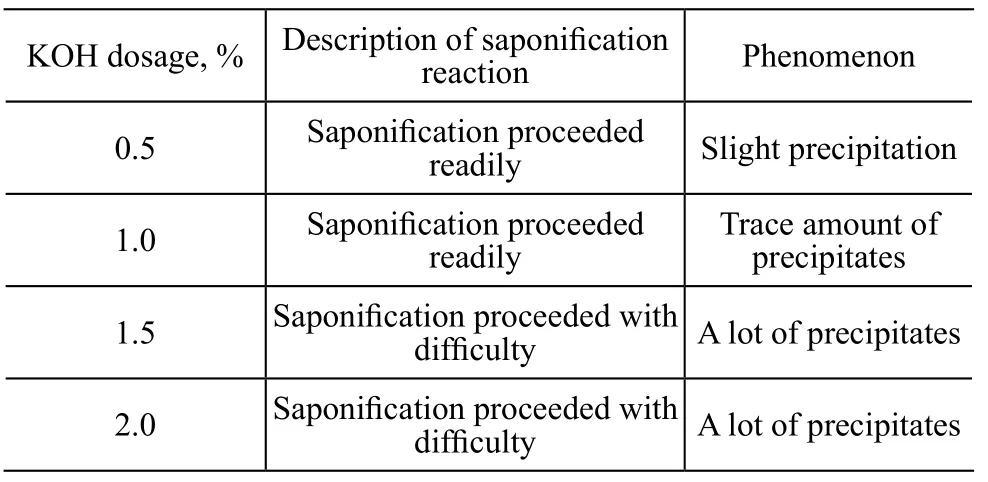
Table 5 Effect of the dosage of KOH on the modified petroleum resin emulsion
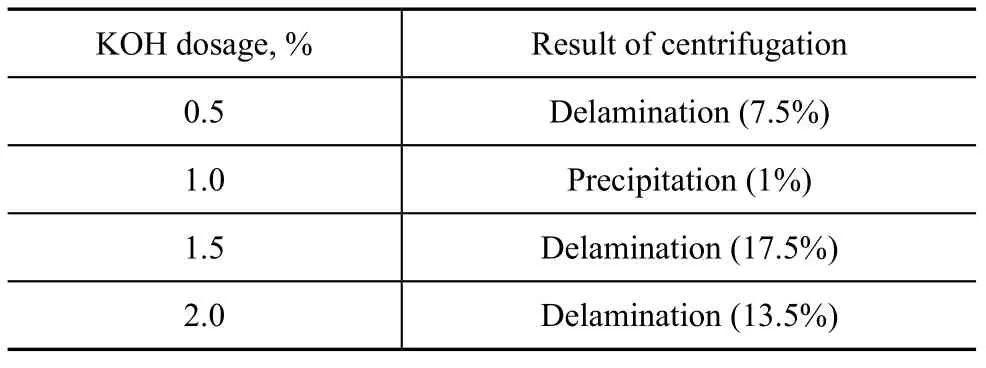
Table 6 Effect of the dosage of KOH on the stability of waterproof agent
As shown in Table 5, the modified petroleum resin emulsion had a lot of precipitates and the saponification reaction proceeded with difficulty when the dosage of KOH was greater than 1.5% or 2.0%. The modified petroleum resin emulsion had less precipitates and the saponification reaction could proceed readily when the dosage of KOH was 0.5% or 1.0%.
As shown in Table 6, the waterproof agent had only a small amount of precipitates when the dosage of KOH was 1.0%. The waterproof agent would experience the delamination phenomenon when the dosage of KOH was other than 1.0%.Therefore it is concluded that the optimum dosage of KOH was 1.0%.
3.4 Effect of the modification time
The effect on modification of petroleum resin was not ideal if the modification time was too short, and on the contrary, it would be a waste of energy if the modification time lasted too long. Tables 7 and 8 show the effect of modification time on the performance of modified petroleum resin emulsion and the stability of the waterproof agent, the modification time ranged from 2 h to 5 h.

Table 7 Effect of the modification time on the modified petroleum resin emulsion
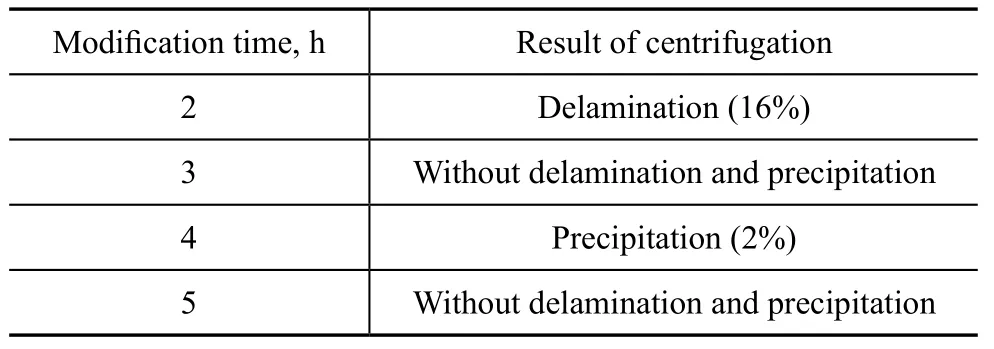
Table 8 Effect of the modification time on the stability of waterproof agent
The modified petroleum resin emulsion experienced only slight precipitation and the saponification reaction proceeded readily when the modification time was between 2 h to 5 h.
The waterproof agent did not experience delamination and precipitation, when the modification time was between 3 h to 5 h. The waterproof agent did experience delamination phenomenon when the modification time was 2 h.
So the best modification time upon taking into account of energy saving should be 3 hours.
3.5 Effect of the modification temperature
The reaction mixture just could not be mixed well when the modification temperature was too low, and without doubt the effect on modification of petroleum resin was unsatisfactory. Moreover, the side reaction would occur easily, if the modification process was carried out at a high temperature. Tables 9 and 10 show the effect of the modification temperature on the quality of modified petroleum resin emulsion and the stability of the waterproof agent. The modification temperature ranged from 160 ℃to 220 ℃.
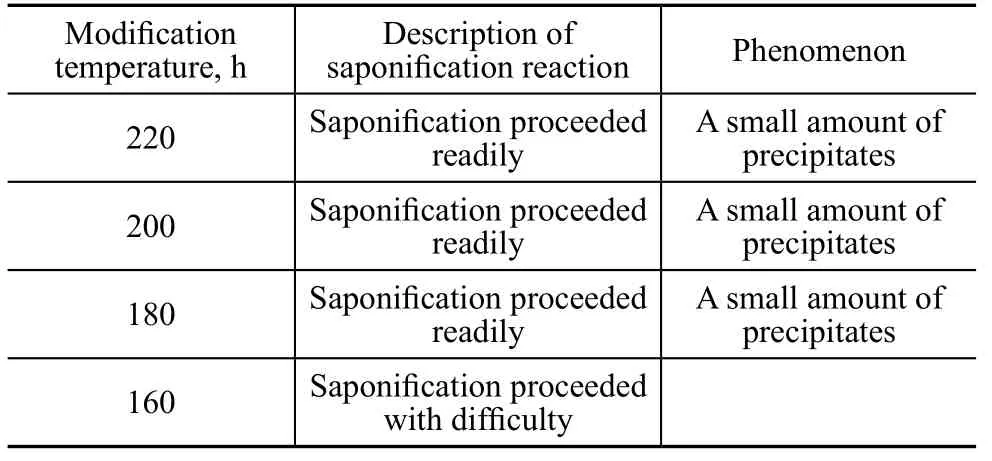
Table 9 Effect of the modification temperature on the quality of modified petroleum resin emulsion
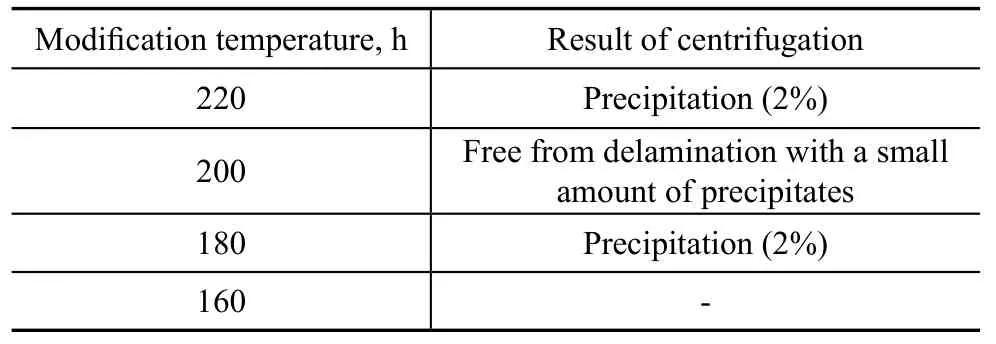
Table 10 Effect of the modification temperature on the stability of waterproof agent
The modified petroleum resin emulsion experienced a slight precipitation phenomenon and the saponification process was easier when the modification temperature was over 180 ℃.
The waterproof agent did not experience delamination phenomenon albeit with a slight precipitation when the modification temperature was 200 ℃.
Therefore it was concluded that the optimum temperature of modification was set at 200 ℃.
4 Conclusions
(a) The optimum process for preparing modified petroleum resin emulsion was implemented at: a maleic anhydride mass fraction of 1.5%, a maleic rosin mass fraction of 10%, a KOH mass fraction of 1.0%, a modification temperature of 200 ℃, and a modi fication reaction time of 3 hours. The average particle diameter of the modi fied petroleum resin emulsion was 104.166 μm.
(b) The waterproo fing agent for the mineral wool board could be made by mixing the modified petroleum resinemulsion, which was prepared under optimum conditions, with wax emulsion at a mixing ratio of 1:1. This waterproofing agent featuring high dispersion and high stability did not experience delamination when it was subjected to centrifugation for 30 min at a speed of 3 000 r/min.
(c) Compared with the ordinary paraffin emulsion-based waterproofing agent, the waterproof ability of waterproofing agent prepared with the above-mentioned method was better. If the mineral wool board was used in combination with this waterproofing agent, its moisture resistant grade could reach RH95.
[1] Zhao Fangran. Discussion on the waterproofness and fiber structure characteristics of mineral woolboard[J]. China Building Materials Science & Technology, 2005(6): 40-43(in Chinese)
[2] Wang Gaofeng, Huang Qingping, Chen Wenlan. An waterproofing agent for emulsion paraffin used for fiber board: China, CN 101597482A[P]. 2009-12-09
[3] Chen Nanxun, Xing Xizeng, Song Xigong. An moisture proof agent for emulsion paraffin used for mineral wool board and its preparation methods: China, CN 1189520C[P]. 2001-01-03
[4] Huang Junzuo, Zhang Shisen. Modification technology and application of C9petroleum resin[J]. Polymer Bulletin, 2010(4): 62-67 (in Chinese)
[5] Li Chunsheng, Shou Chongqi, Gu Yao. Modification of C9petroleum resin[J]. Petrochemical Technology, 1999, 28(2): 102-106 (in Chinese)
Recieved date: 2013-06-25; Accepted date: 2013-09-15.
Professor Li Fengyan, E-mail: lifengyantd@126.com.
杂志排行
中国炼油与石油化工的其它文章
- Catalytic Dehydration of 4-Hydroxy-3-hexanone to 4-Hexen-3-one over HZSM-5 Zeolite
- Diffusion and Reaction Model of Catalyst Pellets for Fischer-Tropsch Synthesis
- Simulation of Low-Temperature Coal Tar Hydrocracking in Supercritical Gasoline
- Catalytic Cracking and PSO-RBF Neural Network Model of FCC Cycle Oil
- Effect of Impregnation Sequence on Propane Dehydrogenation Performance of PtSnNa/ZSM-5 Catalyst
- Influence of Synthesis Parameters with Low Seed Addition on the Crystallinity of ZSM-5
